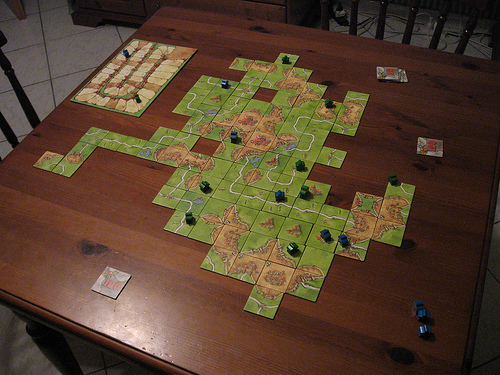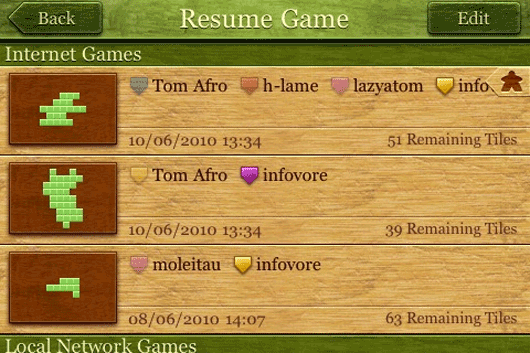-
"A day of support at Mutable Instruments’ is more commonly populated with “If you see a 100kHz square wave at this node, it means the integrator charges itself very fast, probably through the op-amp compensation cap only, not the external cap – check for a bad solder joint on C9” rather than “Have you checked that the power cord is plugged?” (though it happens). Furthermore, once kits get built, ideas of mods and firmware hacks crop up – all requiring expert guidance. All in all, the “support” role at Mutable Instruments is more like “product engineering – the lost levels” – and that’s why, following the introduction of a product – support can be done by no other than the designer of the instruments themselves…" Still, MI's products are getting increasingly lovely. I've always been tempted by a Shruthi, and the Anushri looks lovely.
-
"Prototype iPhone apps with simple HTML, CSS and JS components." Looks nice; also, lovely splash site.
-
Nice write-up of the making of (the marvellous) Trainyard, both in terms of polishing and marketing.
-
Tom on writing the Noticings Uploader – and making the code open-source.
-
"Final Fantasy Tactics: The War of the Lions is heading to iPhone and iPod Touch on 15th September." Uh-oh. I might end up giving it another crack. (It's clearly a great game, but very hard and even more unforgiving).
-
"In AR Monster, you use your iPhone's GPS system and camera to discover and battle more than 600 monsters hidden in the real world. By playing the game in different locations and pointing the handset in different directions, you'll be able to find new kinds of monsters." As is increasingly becoming my reaction to all things AR: "so what?"
Carcassonne: Making Pretty Shapes
18 June 2010
I really like Carcassonne.
I like it because it’s as interesting with two players as with four – just a very different game in each case. I like it because of the various scoring methods it combines: simple play-piece/gain score for roads/abbeys/towns; longer-term risks with potentially higher rewards for farmers. I like that it forces you to juggle a limited number of scoring opportunities.
But I like it best because it’s about making pretty landscapes.

photograph: “Carcassonne: Inns & Cathedrals” by SimDawdler
When The Coding Monkeys (who, a good while ago, wrote the excellent SubEthaEdit), released their iPhone version of Carcassonne, I had to check it out. After all, if they can make a multiplayer text editor as good as SubEthaEdit, they might well be an ideal fit for an asynchronous, multiplayer boardgame.
Turned out I was right: they’ve really put some time and thought into their iP:hone version. The UI is lovely, as simple as possible, but rich where it needs to be: it’s very clear what’s going on and what the options available to you are. There’s also a nice focus on playing asynchronously – multiple games, taking turns as and when – which is only enhanced by the “next table” button that lets you ripple through open games without constantly returning to a menu.
But best of all is this screen:

The tile-layouts of each game are the thumbnail used to represent them.
As the games go on, this screen updates, their icons evolving from single green dots to sprawling landscapes. Of course the layout is the element of the game you place front and centre when it comes to navigation; it’s the most iconic part of any single game, and it works as a lovely aid to recognition.
Nicely done.
-
Ooh. Turned-based multiplayer, from the looks of things, which would be ideal for a nice, long, slow, PBM-style game.
-
"…Bing Destination Maps [bing.com] seems quite interesting as a new way of rendering geographical maps in a more visually simplified, understandable and accessible way. In other words, imagine one can now create a sort of information-optimized summary maps, similar to those you would quickly draw yourself on the back of napkin." It is slow and a bit beta, and the loading graphic is crackers… but otherwise, this is superb.
-
"One of the three typographic styles that is used in Japan is essentially phonetic, and is called Katakana. We’ve been attempting to find ways to incorporate phonetic sounds with the Katakana letterforms." Brilliant.
-
Fantastic. If you're like me, and use One Gmail Account To Rule Them All, but use Mail as your email client, you can only use the main email address to send from. This allows you to pick a from address, making your mailing lists work again, and allowing you to pick the From address on send.
-
MarsEdit 3 is out; the headline feature is the WYSIWYG mode, but for me, the headline features are syntax-highlighting, support for WordPress Pages, and integration with Lightroom's library. Sadly, it's 10.6 only, and my knackered MBP is 10.5… but it's an upgrade I'll be making asap.
-
Blimey, ReBirth, entirely ported to iPhone and on the App Store. Looks finickity, but it was loads of fun, and for $7… I might end up with that.
-
"Fortunately, for the first time in my life, I know the way forward. The way forward lies in my having the courage that I did not know I had a decade ago to bid farewell to those tragically comforting habits. I need to walk on hot coals and sleep on a bed of nails. I need to chew on broken glass. I need to drink paint. This post has gotten long enough and I am still afraid to come to the point, but what I really need more than anything is to write these words;<br />
<br />
I gave notice of my resignation to Ubisoft on Monday, April 26th, 2010." -
Engine Yard have a new blog about Rails, consisting of screencasts and tutorials, and it looks good. One to subscribe to.
-
"Hitotoki stores literary 'sketches' of moments you experience every day. No check-ins. No bullshit badges. We think the most interesting stuff happens in the space between places. Hitotoki is built to help you capture those moments."
-
Bookmarked because I'm fed up of watery allusions to this (last seen: Malcolm Gladwell, Freakonomics (which is annoying because it's watery despite Levitt having *worked on the paper*)). $5 for the *actual information* seems far more interesting than any volume of popular economics books.
-
Hard to explain, but a must-watch; lovely spatial music sequencer/toy. (And: I miss Offworld :( )
-
"The picture clearly shows the path of the sun through the sky over the last six months." Brilliant. (And: so simple!)
-
"Philip K. Dick fans from around the world have contributed to this scanned collection of over 650 PKD book covers." Some of these are awesome, from the crazy french covers for VALIS to the German editions of The Three Stigmata of Palmer Eldritch – retitled as "LSD-Astronauten".